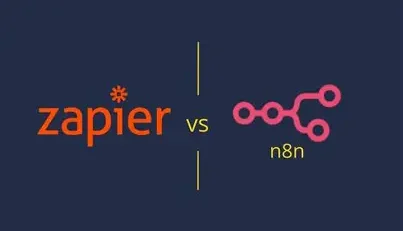𝗣𝗿𝗲𝗱𝗶𝗰𝘁 𝗗𝗿𝗼𝗽𝗼𝘂𝘁𝘀 𝗪𝗶𝘁𝗵 𝗔𝗜 𝗔𝗻𝗮𝗹𝘆𝘁𝗶𝗰𝘀 𝗕𝗲𝗳𝗼𝗿𝗲 𝗧𝗵𝗲𝘆 𝗛𝗮𝗽𝗽𝗲𝗻
Have you ever watched a student you believed in slip away, losing their path and giving up? It’s heartbreaking, and frankly, it happens more often than we’d like to admit. A staggering number of students leave their courses or programs before completing them. In fact, according to recent studies, around 30% of college students drop out during their first year. It makes you wonder: how can we possibly Predict Dropouts before they happen?
Here’s where the power of Artificial Intelligence (AI) comes into play. By harnessing analytics, educators and administrators can predict student dropouts, identify at-risk students, and take proactive steps to keep them engaged. Let’s explore how this works and why it is crucial for the future of education.
𝗚𝗿𝗼𝘄𝗶𝗻𝗴 𝗔𝗲𝗿𝗼𝘀𝗼𝗽𝗵𝗲𝗿𝗲
The educational landscape is changing rapidly. With millions of students entering and leaving the system every year, understanding the factors contributing to dropouts is more important than ever. Leveraging data is essential in pinpointing trends and patterns that lead to disengagement.
When we talk about AI analytics, we refer to systems designed to analyze vast amounts of data quickly. They sift through everything from attendance records to grades, and social engagement metrics. Here’s what the data tells us:
– Many students who drop out often show declining grades.
– A lack of engagement in class activities is another common indicator.
– Personal factors, like financial stress or family responsibilities, can also shape a student’s decision to drop out.
By understanding these trends, we can Predict Dropouts effectively.
𝗗𝗶𝗴𝗶𝘁𝗮𝗹 𝗙𝗼𝗿𝗲𝗰𝗮𝘀𝘁𝗶𝗻𝗴
Let’s talk specifics. How can we use AI to forecast dropouts? First, we need to collect the right kind of data. Inputs can include:
– Academic performance metrics (grades, test scores)
– Attendance records
– Engagement levels in online forums
– Participation in extracurricular activities
Once we assemble this data, we can train AI models to identify students at risk of dropping out. These models can uncover hidden factors, sometimes revealing issues we didn’t see or consider.
I remember a time when we spotted a student who seemed disengaged but was excelling academically. Delving into their records showed us their declining attendance. A quick intervention helped them get back on track, highlighting the importance of Predict Dropouts early on.
𝗘𝗳𝗳𝗲𝗰𝘁𝗶𝘃𝗲 𝗜𝗻𝘁𝗲𝗿𝘃𝗲𝗻𝘁𝗶𝗼𝗻𝘀
Once we identify at-risk students, the next step is intervention. Here are some effective strategies:
– Personalized Communication: Reaching out to students with personalized messages can demonstrate to them that they are valued. It can be as simple as a phone call or even a caring email.
– Mentorship Programs: Matching students with mentors who can guide them can significantly impact their decision to stay.
– Academic Support: Offering tutoring, workshops, or additional resources can address academic struggles before they escalate.
As we implement these strategies, we can witness significant improvements. Data shows that interventions can reduce dropout rates by up to 25%, particularly in vulnerable populations. It strengthens our ability to Predict Dropouts and act swiftly.
𝗧𝗵𝗲 𝗣𝗼𝘄𝗲𝗿 𝗼𝗳 𝗖𝗼𝗻𝘀𝘁𝗮𝗻𝘁 𝗙𝗲𝗲𝗱𝗯𝗮𝗰𝗸
AI analytics are more than just a tool for prediction; they enable constant feedback. As we engage with students, collecting data on the effectiveness of our interventions is essential. This two-way street of information allows us to:
– Adjust our messaging as needed,
– Alter the programs we use,
– Fine-tune mentoring approaches.
By embracing this feedback loop, we can consistently improve our methods for Predict Dropouts.
I’ve seen teachers alter their approaches based on data insights as they learn what resonates with students. These changes can inspire students to remain engaged in their educational journeys.
𝗡𝗼𝘁 𝗝𝘂𝘀𝘁 𝗔𝗡𝗪𝗢𝗥𝗟𝗗 ’𝗦 𝗣𝗥𝗢𝗕𝗟𝗘𝗠
It’s critical to understand that the dropout issue isn’t exclusive to any specific group or region. A 2021 report highlighted that dropout rates were particularly high among first-generation college students, low-income populations, and students from underrepresented backgrounds. By focusing our efforts on these groups through AI analytics, we can not only Predict Dropouts but also provide unique solutions that cater to their needs.
Instilling a sense of community in educational settings is vital. Building an environment where diverse backgrounds are supported encourages persistence.
I’ve witnessed schools establish networks of support tailored specifically for these groups, leading to increased retention rates. Something as simple as community programs can build bonds that keep students connected to their education.
𝗘𝘁𝗵𝗶𝗰𝘀 𝗮𝗻𝗱 𝗗𝗮𝘁𝗮
While there are tremendous opportunities to Predict Dropouts, we must also grapple with the ethics of data collection. Safeguarding student information is paramount. A transparent approach to data use helps build trust, which in turn encourages engagement.
It’s vital to convey to students how their information will be used to help them succeed. Moreover, obtaining consent before data collection is not just ethical, it’s a best practice.
Educators and administrators should engage in conversations around data protection, ensuring that everyone involved understands these systems’ benefits and limitations.
𝗬𝗼𝘂𝗿 𝗥𝗼𝗹𝗲 𝗶𝗻 𝗧𝗵𝗶𝘀 𝗖𝗵𝗮𝗻𝗴𝗲
Finally, I invite you to be part of this transformative journey. We all play a role in creating an educational environment where every student has the chance to succeed. Whether you’re a teacher, an administrator, a parent, or a student yourself, your perspective is valuable.
By embracing data analytics, we can shift our focus from reactive measures to proactive strategies designed to Predict Dropouts before they become a reality. Begin asking questions and pursuing clarity around the data available in your setting: How can you use it? Who might need help?
Every action taken to support at-risk students is a step towards a brighter future for all. I hope that together, we can work towards reducing dropout rates and creating pathways to success.
In conclusion, we have the tools to Predict Dropouts and integrate smart solutions into educational contexts. This isn’t just data; it’s about people, and it’s about ensuring every student has the opportunity to finish what they started. Let’s take this journey together towards a more inclusive and supportive educational future.












Leave a Reply